What is Apparel Production Process?
The apparel production process is a well-organized series of steps that include sketching or designing apparel, pattern creation, grading, marker marking, cutting, stitching, pressing, packing, and so on. That is the transformation of raw textile materials into finished goods: apparel. Apparel is the final output of the clothing or garment manufacturing process.
Let’s know about the garments manufacturing process.
Table of Contents:
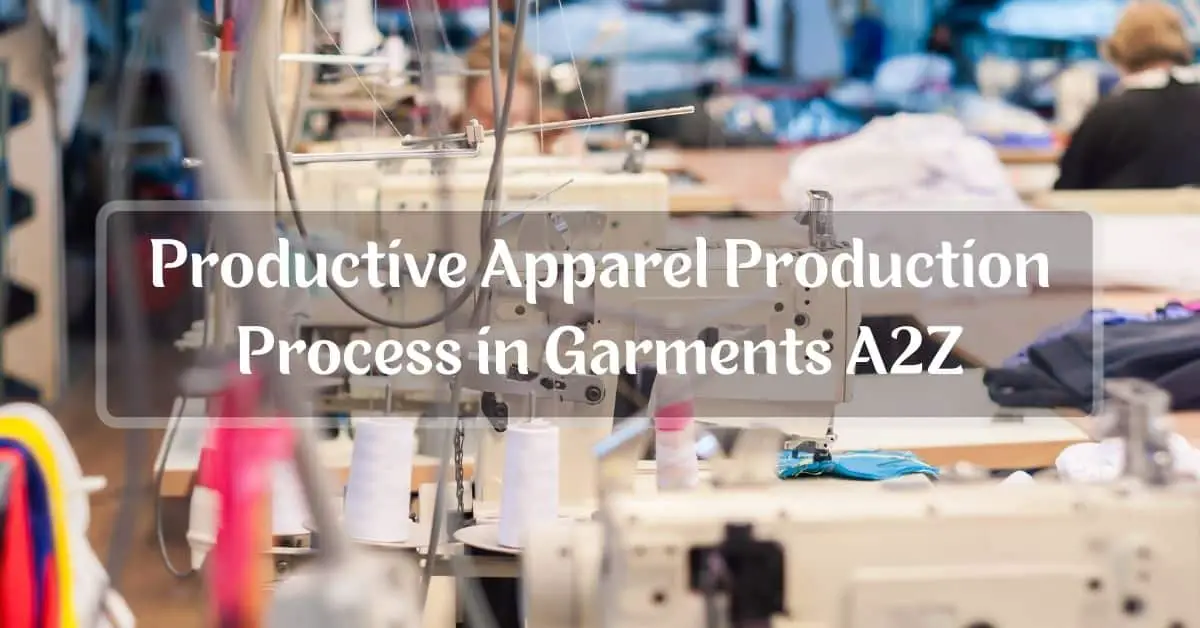
The apparel production process starts with several stages, starting with Fabrics Relaxing, Form Layout and Cutting, Fabrics Laying or Spreading, Pattern Making, Fabric Cutting, Sorting and Bundling, Embroidering and Screen Printing, Sewing, QC, Packaging and so on are all part of the garment production process in the garments industry.
Let’s know the apparel production process in garment industry.
Steps of Apparel Production Process:
1. Fabrics Relaxing
Fabric relaxing is the first process of the manufacturing process in the garment industry. The primary aim of the apparel production process is to relax and contract the fabrics.
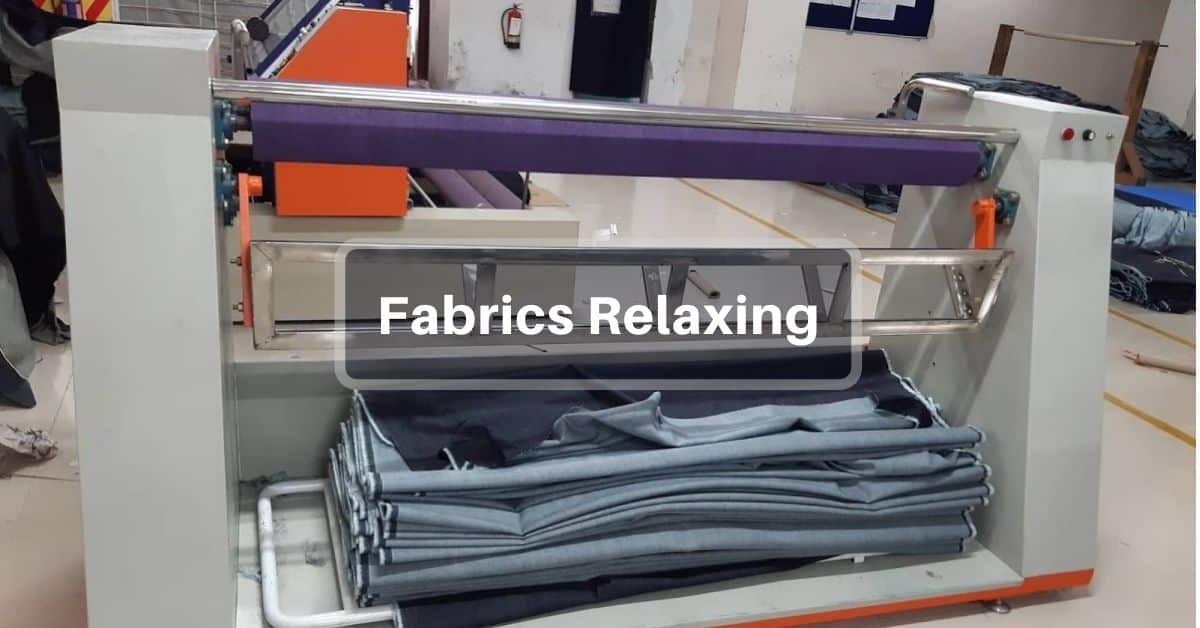
The temperature and humidity is a key aspect of the fabric relaxing process. So that they are ready for the apparel manufacturing process after the complete fabric manufacturing process. Fabrics are subjected to strain at several stages of the production process, which may cause shrinkage. As a result, fabric relaxation causes it to shrink first, reducing shrinkage during consumer use.
2. Form Layout and Cutting
Once the cloth has relaxed or spread, staff cut it into uniform piles and lay it out to begin the cutting process. A computer-controlled device spreads the fabric. The spreading phase aims to identify fabric defects and check tension and slack. It ensures each fabric is aligned correctly.
The staff chooses the number of plies to scatter based on the fabric form and scale of the dress order. They then use computerized cutting machines to lay the fabric designs on top of the spread. A garment type in the desired shape is the end product.
3. Fabrics Laying or Spreading
Fabric laying is the shape of fabric piles. These are spread during the fabric spreading in the apparel production process. Specific procedures and guidelines must be followed during the laying process. Workers start by laying significant bits, then organize the smaller ones.
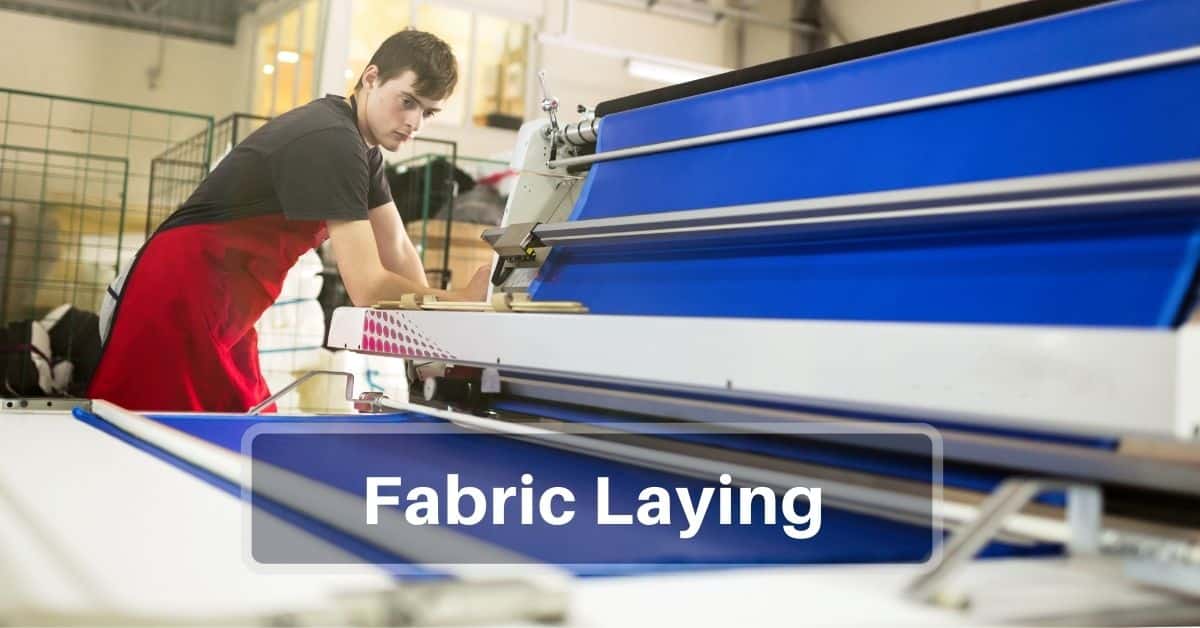
To save the fabric used in the process, the smaller parts may be inserted directly. Since this action involves spreading, laying, and cutting hundreds of objects, it will save a significant amount of money. To be more precise, there are a few guidelines that must follow to ensure that the fabric will be appropriately use and cost-effective.
4. Pattern Making
Pattern making is the process of creating garment designs on hard paper or relevant software. The marker planner selects full-size patterns before placing them on the marker pad. It can handle a lot of bad weather if it’s well-protected.

Markers are essential for planning the cutting process. A spreading system equips the cloth inlets with about 100 layers and markers when they reach the cutting area. A supervisor oversees this process to ensure that it runs smoothly.
5. Fabric Cutting
The most essential action in the cutting room is fabric cutting. Staff begins with the crucial cutting step after completing the scattering, lying, and marking. “Once it’s chopped, there’s no turning back,” as the saying goes, and that is precisely the only maxim of the cutting space.

If there are some problems with the cutting; it assumed that the stitching process. As well as the end product will affect. There is little that can be done to correct those severe flaws. To complete the cutting process, a cutting machine with a straight and sharp knife uses.
You may Like: Automation In Fabric Cutting Room
6. Sorting and Bundling
After cutting, ply numbering is done to all the apparel components. This process is included to avoid color variation in the garment components of the same garment. In a single apparel production process system numbering, sorting and bundling are not required.
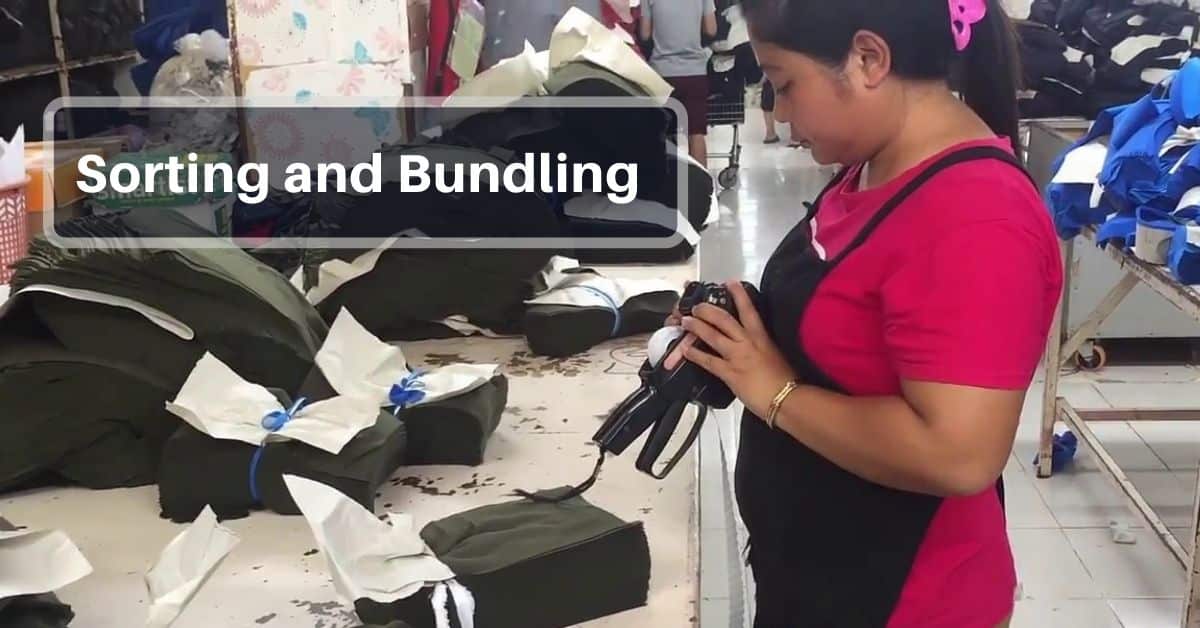
Sorting and Bundling are done and stored in the cutting room. A ticket number or bundle tag represents the bundle to identify the component. Place all of the cut pieces together in sets until the cut is complete.
To maximize production, group related tasks together so that people can do the same job at the same time and eventually reduce production speed. Consider if you brush your teeth on a daily basis. You’ve already devised a technique that makes you more effective at it by now.
7. Sewing
Sewing is the most important part of the apparel production process in garments. After gathering all of the pieces of clothing by size, color, and quantity, they are ready for the next phase of weaving or sewing.
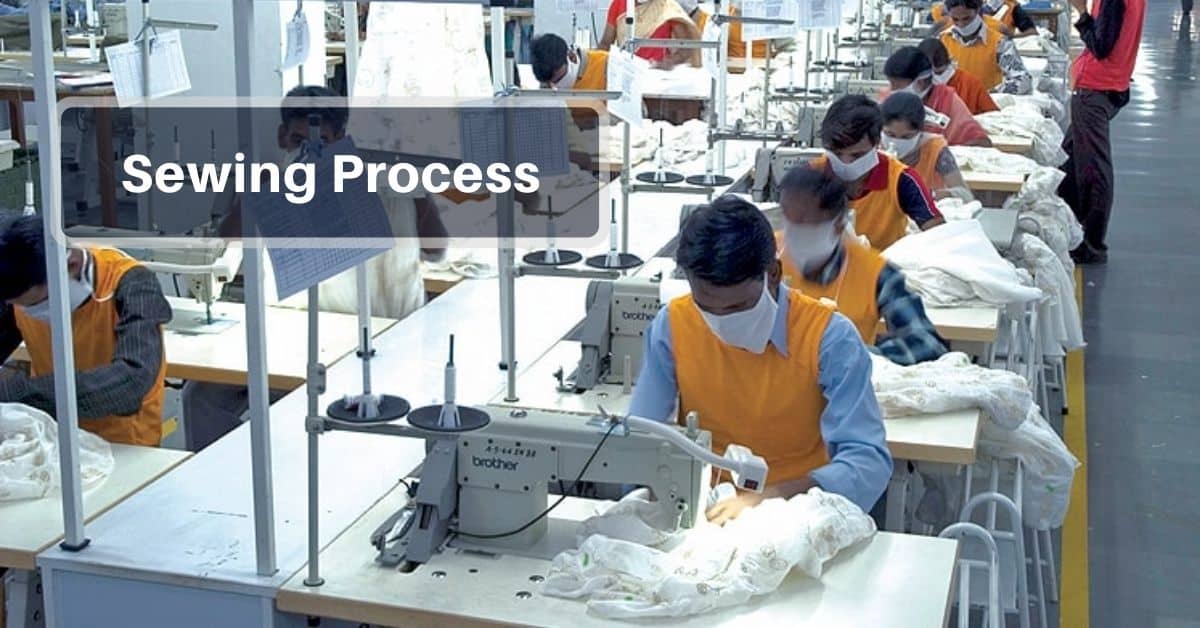
The cut shipped with packets of parts in this situation, and the worker sews the same amount of the garment before passing the part to the next worker to stitch the next part. This maxim reduces the time it takes to finish stitching an entire garment.
8. Quality Checking

Perfect quality checking or QC section is representative of the best garments industry. However, it is reasonable to expect that in a factory with proper checking or quality management systems, a certain proportion of garments would be refused for one purpose or another. Setting a standard as a commodity standard, measuring performance outcomes, and taking corrective steps if there are any inconsistencies in the plans is the easiest way to handle quality tests.
9. Spot Cleaning and Laundry
In addition to identifying production defects, cosmetic defects, stains, or other stains on clothing must also ensure quality. Colors are often marked with a sticker and taken to the spot-cleaning area. Where the garment cleaned with the help of steam, hot water, or chemical stain removers.
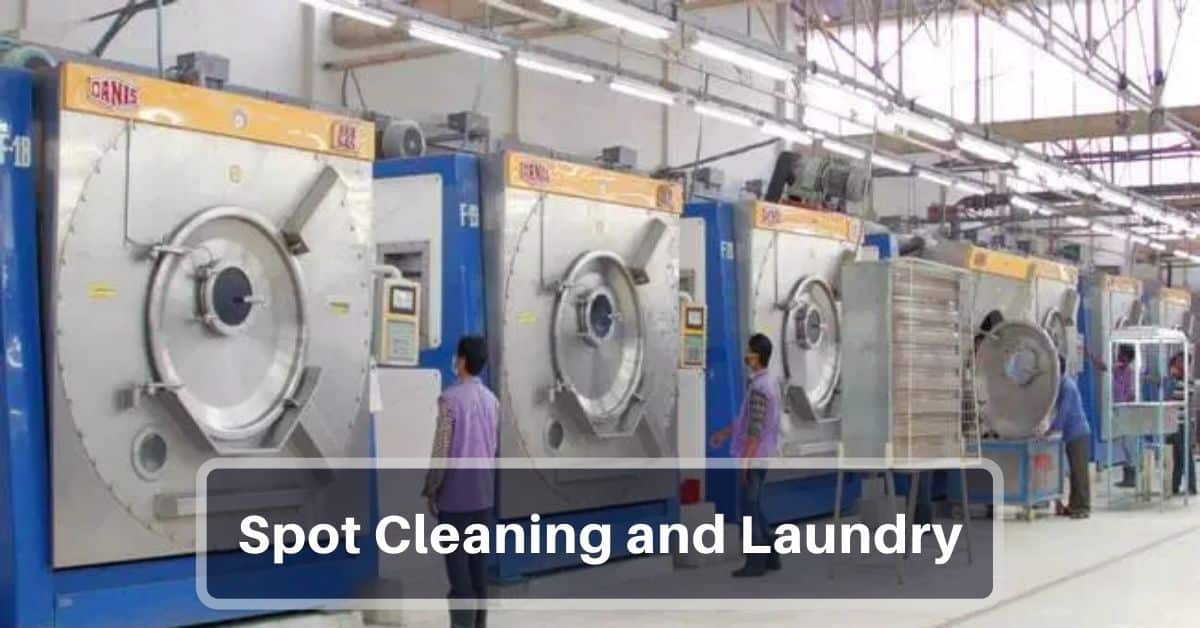
Workers need to ensure the proper assembly of garments without any production defects. Therefore, all garments are taken to the laundry in the factory.
10. Fusing and Pressing
There are two crucial stages that determine the garments’ final appearance. If fussing lays the groundwork, pressing gives the garments their final seal. To finish fussing and pushing, hand irons with vacuum press tables, scissors presses, carousel machines and steam dolly are used.
11. Apparel Packaging & Shipment
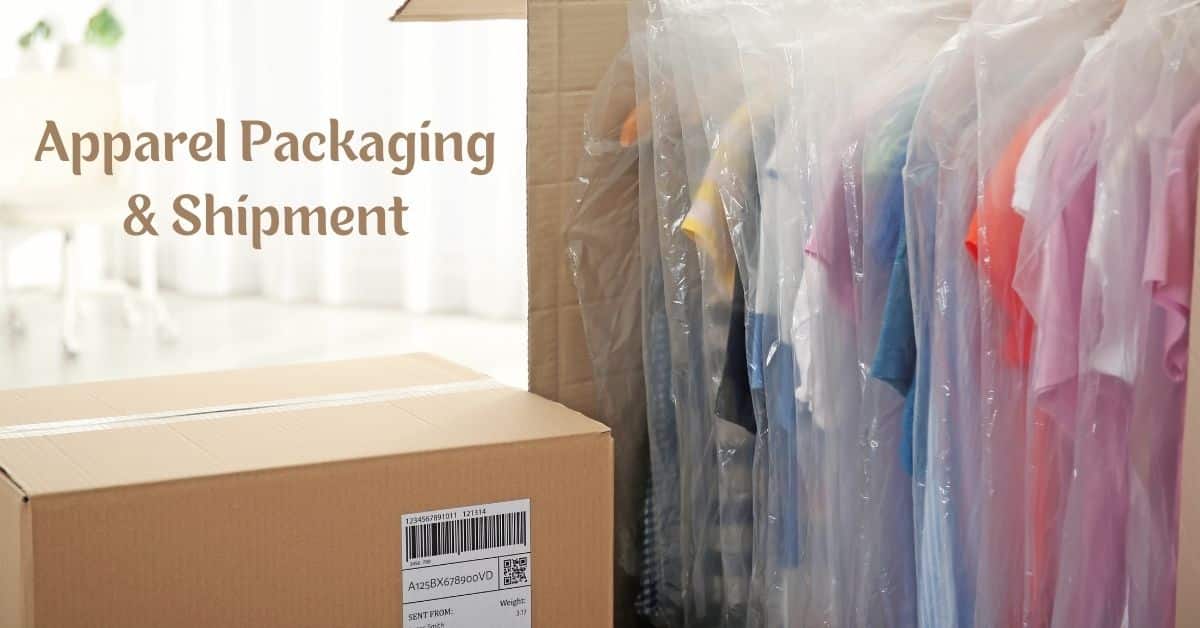
The garments are folded, tagged, and assembled according to the customer’s size and preferences in the final stages of product preparation. Additionally, fabrics can be stored manually or in protective plastic bags automatically. That guarantees that the material is safe and pressurized during packaging before being packaged in cardboard boxes and delivered to the distribution center. Then, the apparel or garment manufacturing process is completed after the shipment of the apparel.
Learn More: Textile Manufacturing Process

I think Quality checking is the best part of production.
It seems to be great that someone doing off-page SEO (textileflowchart & textilecalcualtions) on my site from those I worked as A page SEO expert.